Curriculum Overview
Climate services, like those provided by the International Research Institute for Climate and Society (IRI), use climate data, forecasts, and science to inform decision making for real world problems. This unit contains three modules appropriate for middle and high schoolers that discuss how relevant climate information is generated and used in practice.
A backbone of climate services is climate forecasting, or the use of climate models to predict the average weather in the coming months and years, which is introduced in Fold and Forecast. The use of climate information helps make decisions about tomorrow, such as when responding to extreme events, which is explored in Disastrous Decision Making. Finally, climate information is also used for making decisions about future growing seasons, such as in To Farm or Not to Farm, and for making decisions further in the future as our climate continues to change.
All three of these activities are examples of how professionals in different sectors use climate services in the field. Each student will learn the importance of communicating scientific data to help people around the world. For a concise description of the activities, please see the Curriculum Overview Teacher’s Guide.
These activities were created by Climate Society Community Outreach (CSCO), through the work of two CSCO interns, Suzie Hicks and Sheri Kusatzky, and CSCO members including Laurel DiSera, Nathan Lenssen, and others.

This work is licensed under a Creative Commons Attribution-NonCommercial-NoDerivatives 4.0 International License.
Fold and Forecast
In this activity, students will learn about climate models and the role of forecasting in climate scientists’ research. Students will learn how to convey information when scientists are not certain which outcome will happen. The paper airplanes allow the students to create their own forecast of weather events, such as rainfall or snow. The goal of this activity is to teach students how to make a forecast using probability and to understand why probability is used.
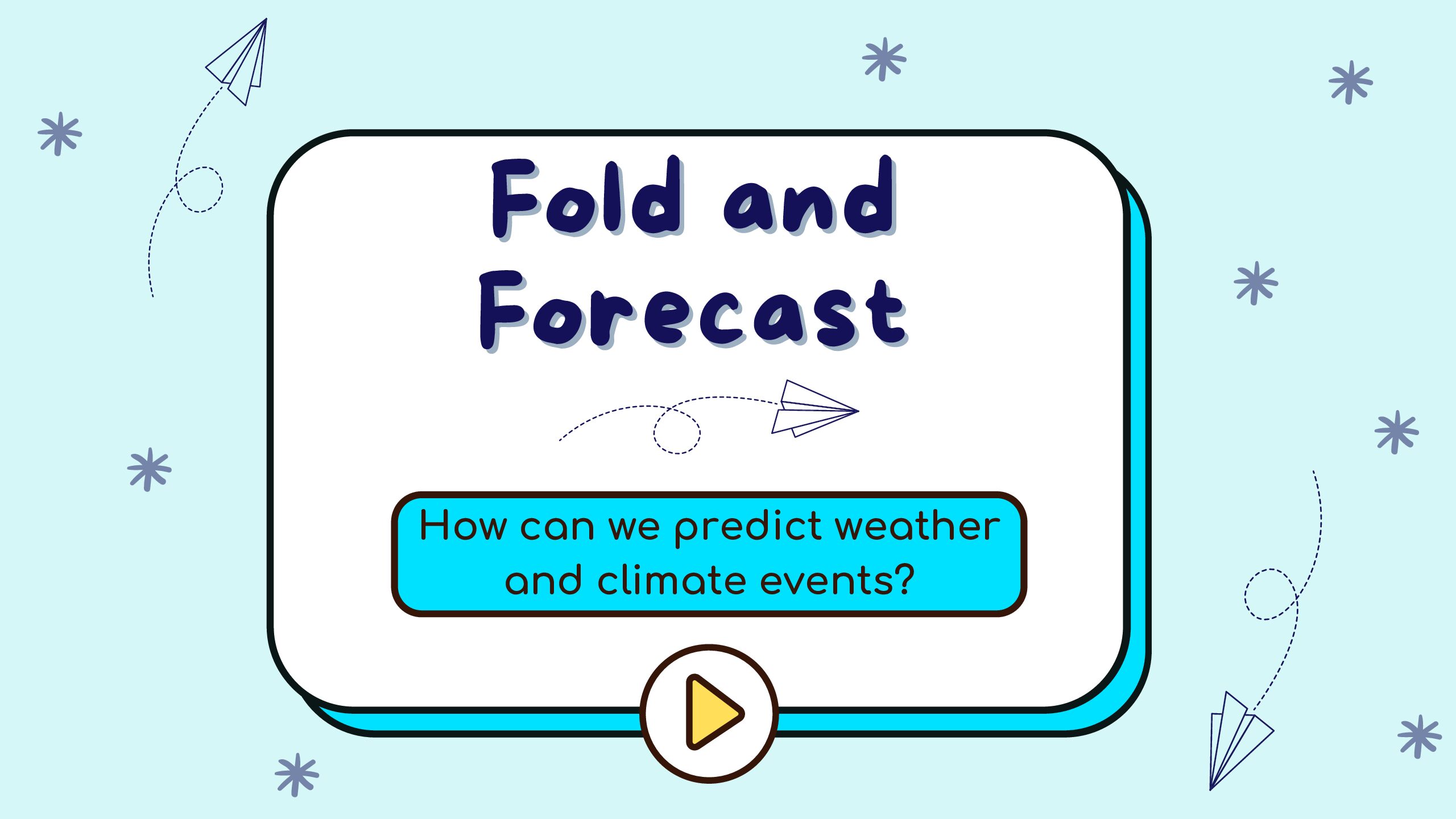
Disastrous Decision Making
In this activity, students will step into the role of farmers and focus specifically on drought risk and the impact on insurance decisions. There are several ways to reduce risk such as changing crop patterns, building savings, working with community networks, or purchasing drought insurance. The goals of this activity are to have students try different risk strategies and learn which are the most successful for farmers and their communities.
- Disastrous Decision Making Intro Video
- Disastrous Decision Making Teacher’s Guide
- Disastrous Decision Making Slides
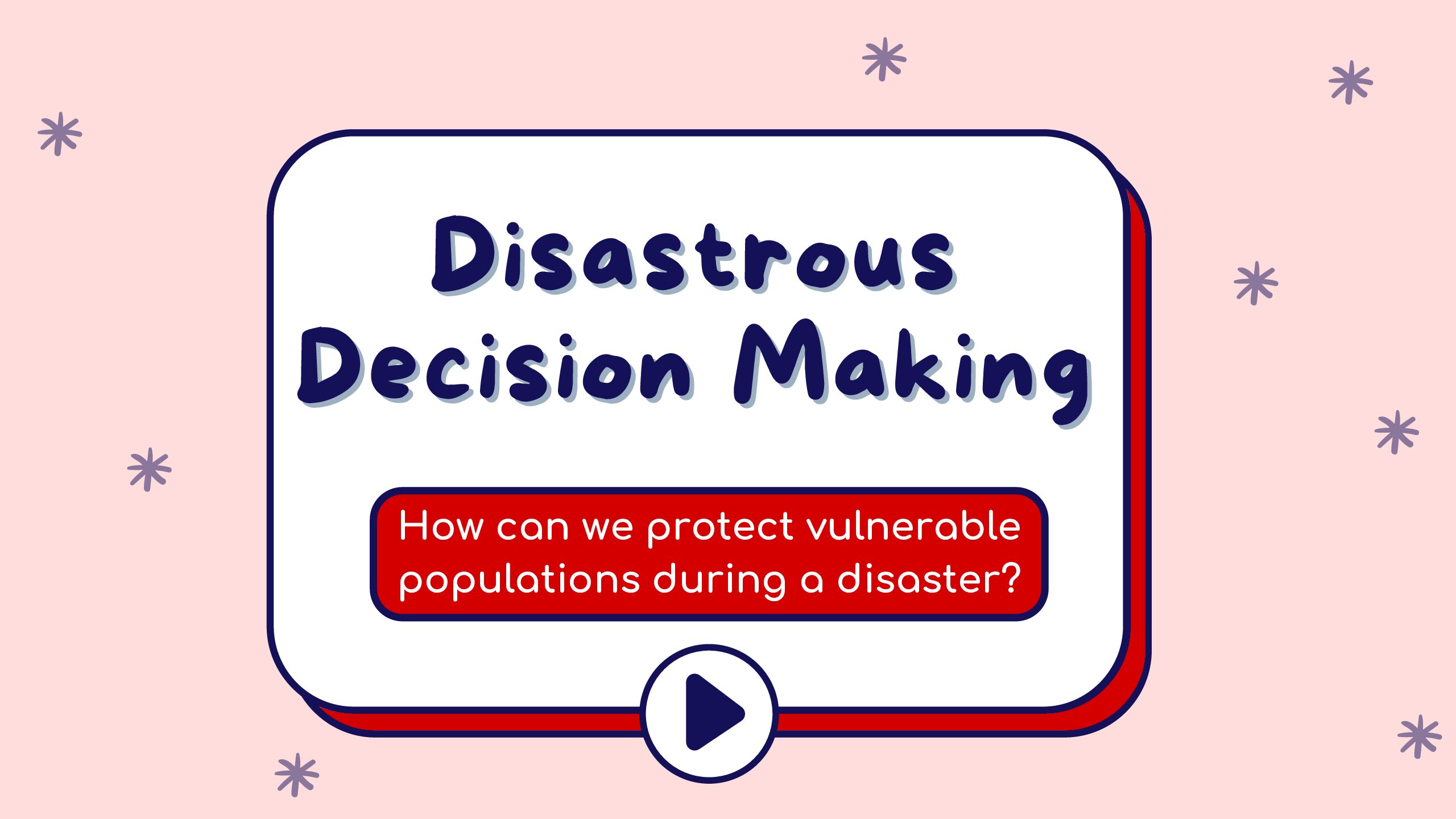
To Farm or Not to Farm
In this activity, students will become decision-makers in the local government of a coastal city during a flood event. Students will use the EPA-created tool EJScreen Mapper to look at the impacts of floods on coastal communities and see how they affect various vulnerable populations. The goals of this activity are for students to make decisions under uncertainty and work together to protect local communities.
This activity is an adaptation of work done by IRI’s Financial Instruments Sector Team (FIST) and their many partners who have contributed to the development of farmer games on climate-index insurance. Some of this work is highlighted in a book chapter (FIST et al. 2022).
- To Farm or Not to Farm Intro Video
- To Farm or Not to Farm Teacher’s Guide
- To Farm or Not to Farm Slides
- To Farm or Not to Farm Slides – Monetary Version

Partners
IRI and CSCO are partners with SubjectToClimate. These materials are included in their curated database of climate-related educational materials. SubjectToClimate (StC) is a nonprofit online connector for K-12 educators of all subjects to find credible and engaging materials on climate change at no cost.
Contact Information
For more information about CSCO outreach, please contact us.

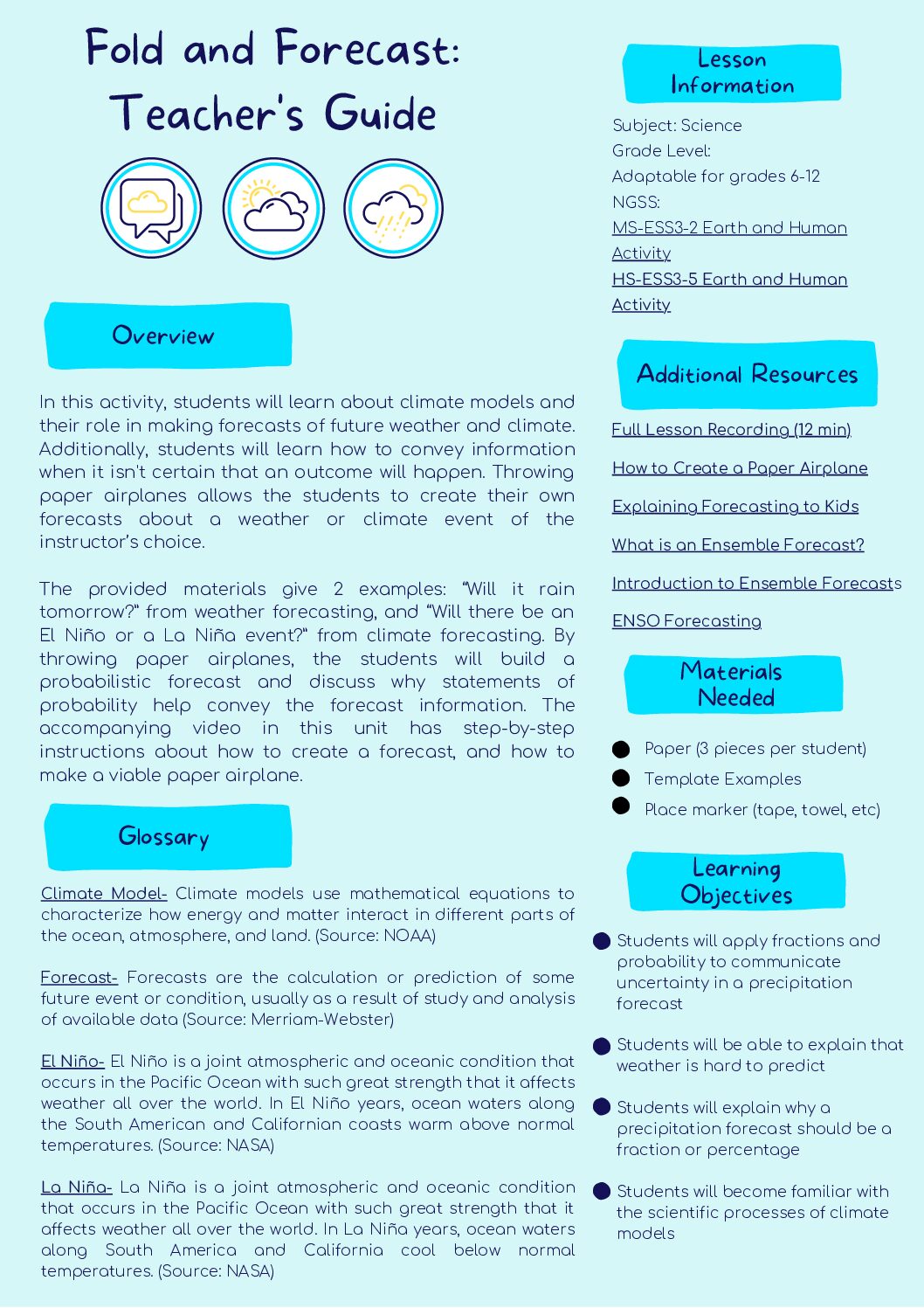
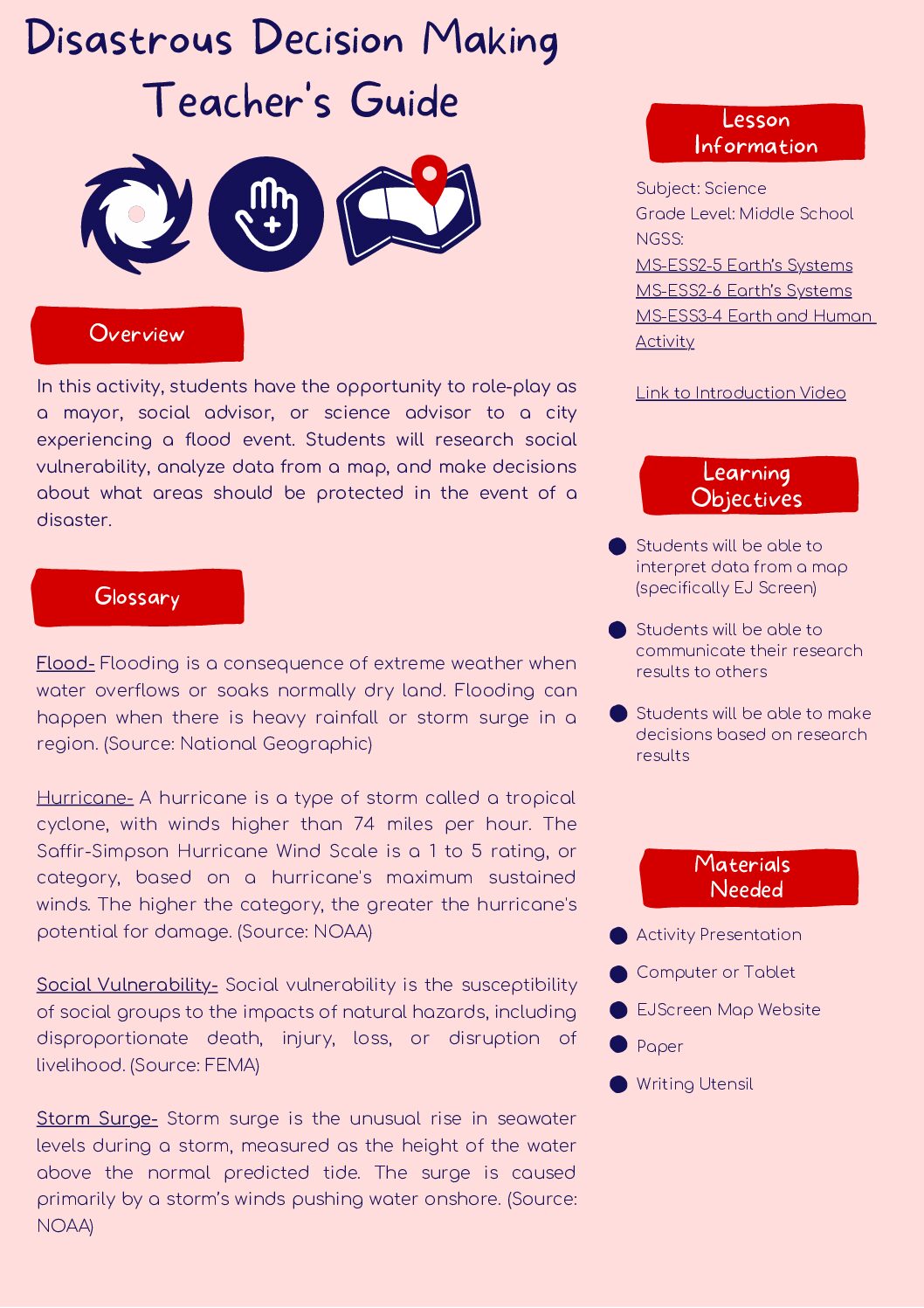
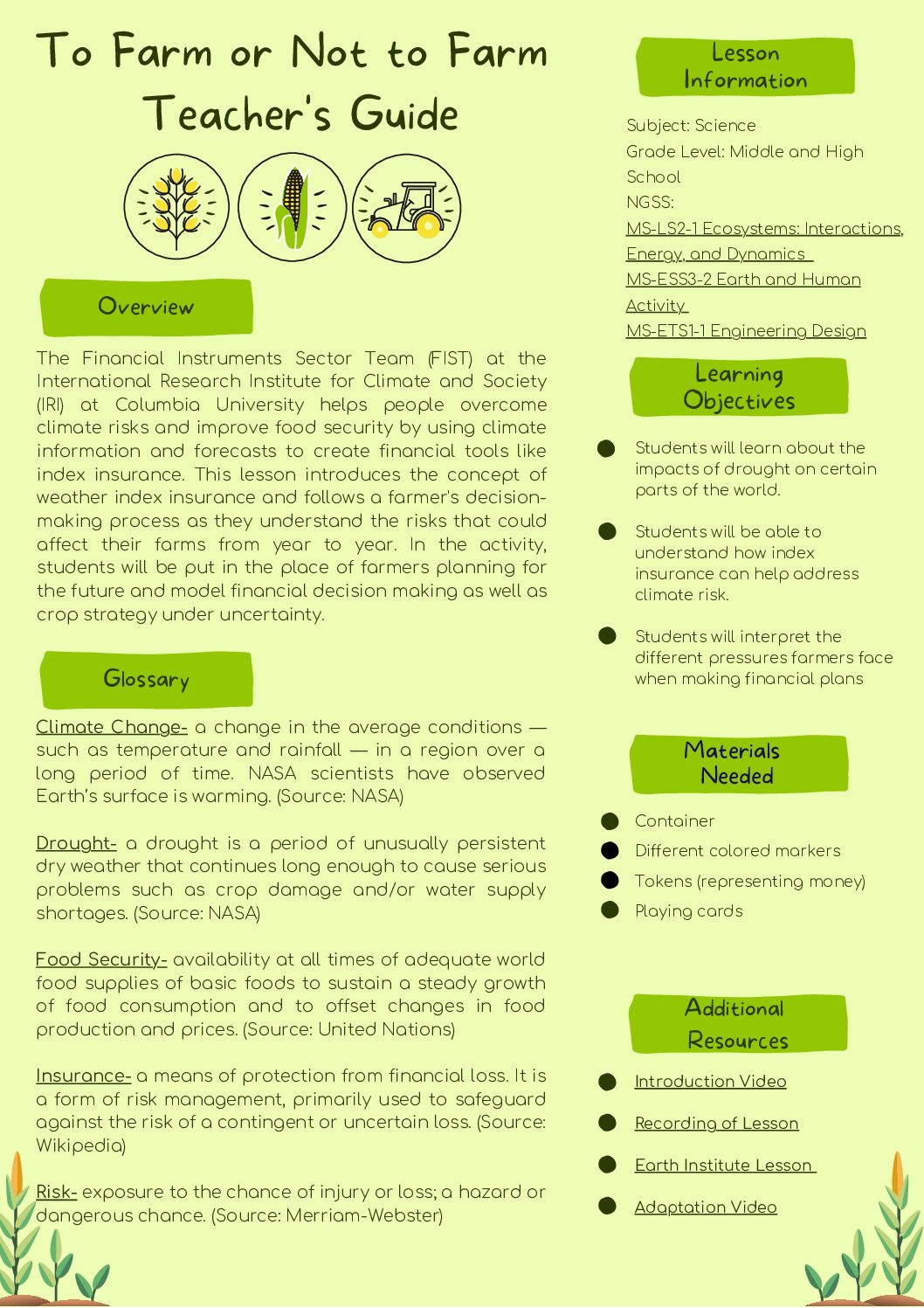


You must be logged in to post a comment.